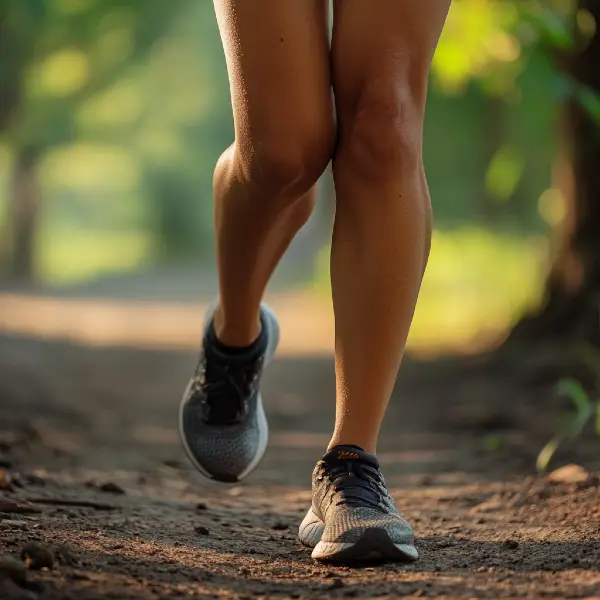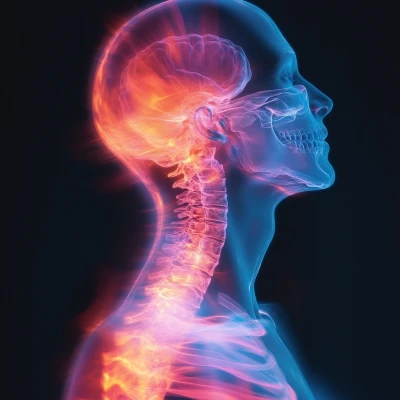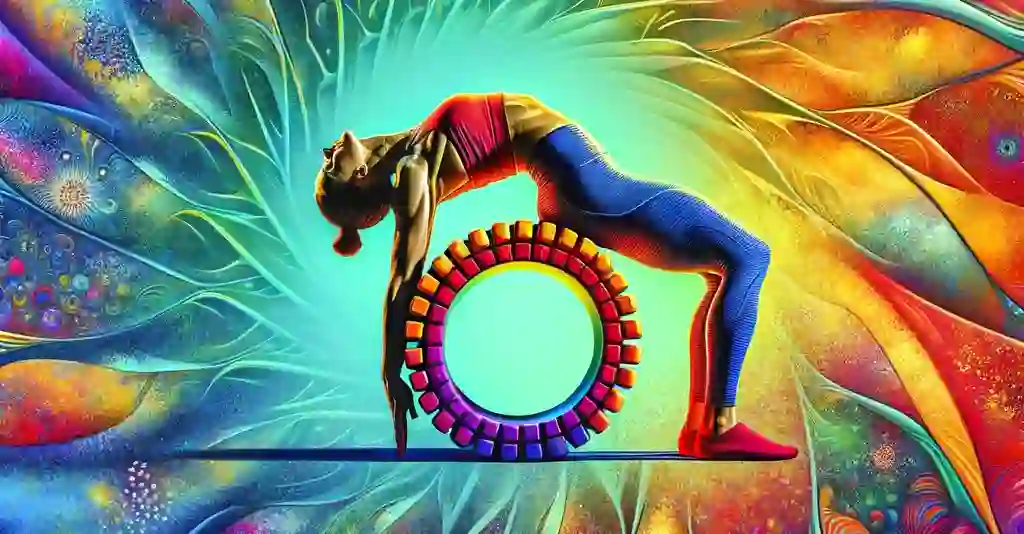Run Pain-Free: How A Toronto Chiropractor Treats Common Running Injuries

Chiropractic care can be instrumental in addressing and preventing common running injuries. Here’s an overview of prevalent injuries among runners and how chiropractic interventions can assist:
1. Runner’s Knee (Patellofemoral Pain Syndrome):
- Description: Characterized by pain around or behind the kneecap, often exacerbated by activities like climbing stairs, squatting, or prolonged sitting in addition to running.
- Chiropractic Approach: Chiropractors assess and correct biomechanical imbalances, focusing on the alignment of the spine and lower extremities. They may employ soft tissue therapies to alleviate tension in surrounding muscles and recommend exercises to strengthen the quadriceps and improve knee stability.
2. Achilles Tendonosis:
- Description: Irritation of the Achilles tendon, presenting as pain and stiffness at the back of the heel, especially during push-off phases of running or after periods of inactivity.
- Chiropractic Approach: Treatment may include adjustments to the ankle and foot to improve joint mobility, soft tissue therapies to reduce pain, and guidance on stretching and strengthening exercises for the calf muscles.
3. Iliotibial Band (ITB) Syndrome:
- Description: Pain on the outer side of the knee or hip, resulting from irritation of the IT band due to repetitive friction during activities like running. Can be related to a flat foot or sometimes the hip and even the lower back.
- Chiropractic Approach: Chiropractors can perform soft tissue therapies to release tension in the IT band and surrounding muscles. They may also provide adjustments to the pelvis and lower extremities to correct alignment issues contributing to the syndrome.
4. Plantar Fasciitis:
- Description: Pain in the heel or bottom of the foot, particularly noticeable with the first steps in the morning or after prolonged periods of standing or increased mileage for the week as you try to ramp up your training. Often related to the leg and not the foot.
- Chiropractic Approach: Treatment may involve adjustments to the foot and ankle to improve biomechanics, soft tissue therapies to reduce tension in the plantar fascia, and recommendations for orthotics or supportive footwear.
5. Shin Splints (Medial Tibial Stress Syndrome):
- Description: Pain along the shin bone (tibia), often due to overuse or sudden increases in training intensity.
- Chiropractic Approach: Chiropractors can assess gait and running mechanics, provide adjustments to the lower extremities, and recommend exercises to strengthen the muscles of the lower leg.
6. Hamstring Strains:
- Description: Tears in the hamstring muscles, leading to pain at the back of the thigh, swelling, and difficulty with leg movements. Usually related to your tempo run when you went to fast or were on uneven ground.
- Chiropractic Approach: Treatment may include soft tissue therapies to promote healing, adjustments to the pelvis and lumbar spine to ensure proper alignment, and guidance on gradual stretching and strengthening exercises. With the proper Rehabilitation exercises you can improve your return to walking and running sooner rather then later.
7. Stress Fractures:
- Description: Small cracks in bones, commonly occurring in the feet or lower legs due to repetitive stress.
- Chiropractic Approach: While rest is crucial for healing stress fractures, chiropractors can assist by addressing biomechanical factors that may have contributed to the injury, such as improper gait or misalignments, and provide guidance on safe return-to-activity protocols.
Here’s an expanded overview that includes gait retraining along with the previously discussed chiropractic techniques, therapies, and rehabilitation exercises beneficial for runners:
Preventing Common Running Injuries
1. Active Release Technique (ART)
Overview: ART is a specialized soft tissue treatment method designed to alleviate muscle tightness and improve mobility. It combines elements of massage and stretching to target muscle adhesions, which are areas where tissues become stuck together, causing pain and reduced range of motion.
Benefits for Runners:
- Muscle Adhesion Relief: By applying precise pressure while lengthening the muscle, ART can break down adhesions and scar tissue, helping runners recover from injuries more quickly.
- Improved Flexibility: Regular ART sessions can enhance flexibility and range of motion, which are crucial for optimal running performance and injury prevention.
- Enhanced Recovery: Runners often experience tightness in specific muscle groups. ART helps in releasing this tension, thereby accelerating recovery between training sessions.
2. Graston Technique
Overview: The Graston Technique is a form of instrument-assisted soft tissue mobilization. It uses specialized stainless-steel instruments to detect and treat areas of dysfunction within the soft tissues, such as scar tissue and fascial restrictions.
Benefits for Runners:
- Scar Tissue Breakdown: By scraping the skin with the instruments, practitioners can effectively break down scar tissue and fascial restrictions, promoting healing and improving mobility.
- Increased Blood Flow: The technique stimulates circulation in the affected areas, which aids in recovery and helps to reduce inflammation.
- Enhanced Recovery Time: Many runners find that regular use of the Graston Technique helps them recover faster from both acute injuries and chronic issues.
3. Functional Dry Needling
Overview: Functional dry needling involves inserting thin needles into specific trigger points or tight bands of muscle. This technique aims to relieve muscle tension and improve overall function.
Benefits for Runners:
- Trigger Point Release: By targeting trigger points, dry needling can effectively relieve localized muscle tightness, which is common in runners due to repetitive motion.
- Pain Relief: The insertion of needles can help decrease pain signals and promote relaxation in overactive muscles, allowing for a more comfortable running experience.
- Increased Range of Motion: As tightness is alleviated, runners may experience improved mobility and range of motion, contributing to better running form and performance.
4. Spinal and Extremity Adjustments
Overview: Chiropractic adjustments involve the manual manipulation of the spine and extremities to restore proper alignment and function. This technique can address various musculoskeletal issues that affect running.
Benefits for Runners:
- Pain Reduction: Realigning joints can relieve pain caused by misalignments, helping runners to maintain their training regimen without discomfort.
- Improved Movement Efficiency: Proper alignment enhances the body’s biomechanics, allowing for smoother and more efficient movement while running.
- Injury Prevention: Regular adjustments can help identify and correct imbalances or restrictions in the body, reducing the risk of injuries associated with running.
5. Laser Therapy
Overview: Laser therapy, or low-level laser therapy (LLLT), uses focused light to stimulate cellular function and promote healing in tissues. It is non-invasive and pain-free, making it suitable for various musculoskeletal injuries.
Benefits for Runners:
- Reduced Inflammation: Laser therapy can decrease inflammation in injured tissues, promoting faster healing and recovery.
- Pain Relief: Laser light can help alleviate pain by promoting the release of endorphins and other healing compounds in the body.
- Enhanced Tissue Repair: Laser therapy stimulates cellular activity, aiding in the repair of damaged tissues, which can help runners recover from injuries more quickly.
6. Shockwave Therapy
Overview: Shockwave therapy, also known as extracorporeal shockwave therapy (ESWT), involves sending acoustic waves into injured tissues to stimulate healing and reduce pain.
Benefits for Runners:
- Pain Reduction: Shockwave therapy is effective in reducing pain associated with chronic conditions, such as plantar fasciitis or tendonitis, which are common among runners.
- Enhanced Tissue Healing: The acoustic waves promote increased blood flow and tissue regeneration, helping to heal injuries faster.
- Breakdown of Calcifications: Shockwave therapy can help break down calcifications and scar tissue, improving mobility and function in affected areas.
7. Rehabilitation Exercises
Overview: Rehabilitation exercises are tailored movements designed to strengthen specific muscle groups, improve flexibility, and enhance overall functionality. They play a crucial role in recovery from injuries and in preventing future issues.
Benefits for Runners:
- Strengthening Key Muscle Groups: Focused exercises can strengthen the core, hips, and legs, which are essential for maintaining proper running form and preventing injuries.
- Improving Flexibility and Balance: Stretching and balance exercises help enhance flexibility in the hips, hamstrings, and calves, reducing the risk of strains and injuries.
- Injury Prevention: Incorporating rehabilitation exercises into a training regimen can help identify muscle imbalances and weaknesses, allowing for targeted interventions before they lead to injuries.
Common Rehabilitation Exercises for Runners:
- Hip Strengthening: Exercises like clamshells, lateral leg raises, and bridges target hip abductors and stabilizers, crucial for maintaining proper running form.
- Core Stabilization: Planks, side planks, and bird dogs help build core strength, providing stability during running and reducing the risk of injury.
- Calf and Hamstring Stretching: Regular stretching of these muscle groups helps maintain flexibility, essential for efficient running mechanics.
- Balance Exercises: Single-leg stands, stability ball exercises, and yoga can enhance balance, contributing to better overall coordination while running.
8. Gait Retraining
Overview: Gait retraining involves assessing and modifying an individual’s running mechanics to improve efficiency and reduce the risk of injury. It focuses on correcting improper movement patterns that may lead to pain or injury during running.
Benefits for Runners:
- Improved Biomechanics: By analyzing and adjusting running form, gait retraining can enhance overall biomechanics, leading to more efficient running and reduced energy expenditure.
- Injury Prevention: Identifying and correcting gait abnormalities can significantly lower the risk of common running injuries such as shin splints, runner’s knee, and IT band syndrome.
- Enhanced Performance: Proper gait mechanics can improve running speed and endurance, allowing runners to perform better over longer distances.
Common Gait Retraining Techniques:
- Video Analysis: Using video technology to analyze a runner’s form helps identify specific areas for improvement and track progress over time.
- Drills and Cues: Specific drills (like short strides or cadence adjustments) and verbal cues can help runners adjust their mechanics in real-time during training.
- Footwear Assessment: Evaluating and recommending appropriate footwear can support better running mechanics and provide necessary cushioning and support.
Conclusion
Integrating chiropractic techniques, advanced therapies like laser and shockwave treatments, rehabilitation exercises, and gait retraining can significantly enhance the health and performance of runners. Addressing soft tissue issues, improving flexibility and strength, ensuring proper alignment, and optimizing running mechanics help runners train more effectively, recover faster, and minimize the risk of injury. Incorporating these treatments into a runner’s regimen can lead to improved performance and a healthier, more enjoyable running experience.








